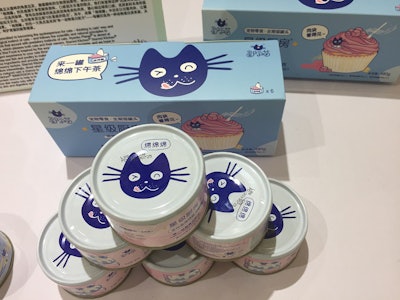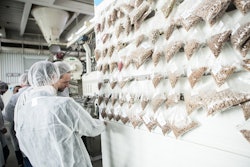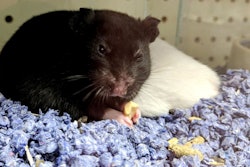
Sales of grain-free pet food in China grew 173% from 2016 to 2018, with the number of pet owners buying it increasing 158%, according to Jerel Kwek, CEO of Addiction Pet Foods. This is one of the key signs that Chinese pet owners are paying more attention to the ingredients and formulations of the pet foods they buy, just like their counterparts in many other regions of the world.
Other signs include a whopping 687% rise in pet owners buying complete nutrition foods (as opposed to pet treats and snacks, presumably) and also growth in sales of products formulated for specific lifestages or conditions – for example, a 229% increase in foods for spayed or neutered pets and 86% growth in ones for pregnant cats or dogs, Kwek said. (He did not give the source of his data.)
Presenting at Petfood Forum China 2019 on August 20 in Shanghai, Kwek explained strategies and tips necessary for pet food brands, especially ones coming from outside of China, to succeed in the country. The first step, he said, is to understand this unique market and its consumers.
Chinese pet-owning consumers are unique
“China is a completely different market from any other,” Kwek said. While this seems true in many areas (such as a total non-comprehension of the concept of intellectual property), he focused on pet-food-purchasing consumers, who:
- Do more research than anyone else to determine if they can trust a pet food or tell if it’s “fake”;
- Often perceive imported products as higher quality;
- Are very tech savvy – e-commerce is a very large channel for pet food in China;
- See cross-border e-commerce as an appealing, trusted source;
- Tend to live in apartments or in very close quarters with their pets, so many have smaller dogs;
- Are subject to misinformation about products and nutrition similar to that of other markets – for example, there’s a myth going around in China that if kibble doesn’t dissolve in water, it's fake, Kwek said.
Pet food ingredient trends on display at Pet Fair Asia
Many of Kwek’s points and data were supported by the products and marketing displays at Pet Fair Asia, a large trade show that followed Petfood Forum China. For instance, ingredients were front and center, proving that pet food companies manufacturing in China or selling their products there are responding to consumer interest.
Though these products and stands echoed similar ones often seen at pet trade shows in Western regions, some Pet Fair Asia exhibitors took it to a new level. This was true of pet food brands but also industry suppliers touting “organic raw materials” or highlighting with large graphic displays the origin countries of the ingredients they provide.
In addition, I noticed a few North American-based pet food brands prominently displaying positive ratings from publications like Whole Dog Journal. (I had to wonder if Chinese retailers or consumers even know what that publication is, but supposedly positive ratings play well in any market?)
Other ingredients trends seen at the show included novel, exotic proteins (freeze-dried quail egg yolks, anyone?) – often represented by large, beautiful photos of the source animals on the pet food packages – or naming, again on the package, specific ingredient brands, such as a vitamin premix.
Packaging, tech and the future
Note the mentions of packaging: Another trend in Shanghai was a proliferation of sophisticated and, in some cases, unique packaging and marketing concepts. Mondrian graphics appeared in several booths, and I saw interesting ideas like a “coffee” drink for pets so their owners can share in what’s becoming a popular experience for Chinese consumers (Starbucks and similar coffee retailers are increasingly common there).
Another unique idea: putting graphics on the bottoms of pet food cans and displaying them upside down. My guess is that the smooth can bottom offers a better display area for graphics, plus perhaps the upside-down positioning keeps the contents mixed?
And Kwek was spot on about the Chinese consumer’s tech savviness; Pet Fair Asia devoted one section of a hall to tech-related pet products. The stands there included one for a company called PetWifi, which displayed multiple pet food products (many from outside China) and a large video screen explaining how to order them via the company’s online system.
The Chinese pet food and products market is growing so fast that it’s difficult to predict where it’s headed, and there are potential storm clouds on the bright horizon: Besides the obvious (such as China’s trade war with the U.S.), new pet food regulations threaten to further limit imports and close a loophole allowing cross-border e-commerce. Plus, the regulations may eventually reign in some of the many ingredient and product claims that market experts suspect are not at all substantiated; and as this market closely follows global trends, forces could begin aligning against them (such as with grain-free pet food and canine dilated cardiomyopathy in the U.S.).
Yet right now for pet food in China, it seems the only way is fast forward.
















